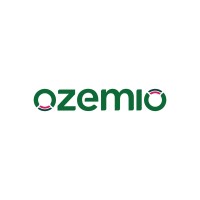[ad_1]
Empower Growth With Custom eLearning Solutions
Organizations constantly seek ways to equip their workforce with the skills and knowledge to stay competitive. Bespoke content development is one of the most effective methods to achieve this. This strategy tailors learning experiences to meet the unique needs of a workforce, thereby transforming their potential in the talent landscape. This article delves into how bespoke content development can revolutionize workforce potential in today’s talent landscape and how organizations can harness its power to unlock new productivity levels, innovation, and growth.
The Power Of Custom Learning: Building Training Programs That Work For Your Team
Custom content development refers to learning materials, training programs, or educational content designed for an organization’s unique objectives, culture, and workforce essentials. Unlike off-the-shelf training solutions, which offer broad topics without customization, bespoke content focuses on developing learning solutions from scratch for the specific skills and knowledge workers need to excel in their roles.
This includes interactive eLearning modules and training videos, as well as tailored workshops and webinars. Bespoke content assures that the learning journey aligns with business goals and addresses employees’ specific challenges, whether building soft skills, technical expertise, or leadership abilities.
The Importance Of Custom Content In The Talent Landscape
As companies embrace technological advancements, the demand for highly skilled talent grows. Generic, one-size-fits-all learning solutions often fail to meet the myriad needs of today’s dynamic workforce. Custom content development or bespoke content addresses this gap, drives significant learner engagement and knowledge retention, and fosters a culture of continuous learning. Here are few reasons why custom content development acts as a game change in talent development:
1. Alignment With Business Goals And Workforce Needs
Every organization has its own set of goals, culture, and industry-specific challenges. Custom content development allows organizations to create training materials closely tied to their business strategy, helping employees develop the skills necessary to achieve organizational goals.
For example, a company looking to implement a new software system can develop content designed to teach employees how to use the system effectively. Similarly, a company strongly emphasizing customer service can build content that trains employees to manage customer interactions with empathy and professionalism, reflecting the company’s brand values.
2. Increased Employee Engagement And Retention
Generic training programs can often feel impersonal and disconnected from an employee’s day-to-day work, leading to disengagement. However, when learning content is tailored to the employee’s role, challenges, and personal growth objectives, it becomes far more engaging. Custom content speaks directly to the learner, making it more relevant, engaging, and applicable.
Engagement is key to retention—not just of knowledge but also of employees. When organizations invest in custom content, they send a powerful message that they are committed to the development of their people. This helps foster a culture of continuous learning and contributes to higher employee satisfaction and retention rates.
3. Addressing Skills Gaps
With the fast-paced advancements in technology and industry practices, skills gaps are a notable concern for many organizations. Traditional training programs may need to address these gaps effectively. Custom content development allows companies to pinpoint specific skills that are lacking and design learning experiences that fill these gaps.
For instance, if a company identifies its employees struggling with emerging technologies like Artificial Intelligence (AI) or Machine Learning, custom content can be developed to apprise them of these areas. This targeted approach ensures that employees are always equipped with the right skills, empowering them to perform better and stay ahead of industry trends.
4. Flexibility And Scalability
The workforce today is diverse and geographically dispersed. Custom content offers the flexibility to provide training materials across multiple formats (eLearning, microlearning, virtual classrooms, etc.), ensuring that employees can access the content at their own pace and convenience. This is particularly important in remote and hybrid work environments, where traditional training methods may fall short.
Moreover, custom content is highly scalable. As organizations grow, they can quickly adapt and expand their training programs to accommodate new employees or evolving business needs. Whether onboarding new hires or upskilling existing employees, custom content provides a scalable solution that grows alongside the organization.
5. Fostering A Culture Of Continuous Learning
In today’s work environment, a static workforce is a liability. Organizations need to develop a culture of continued learning to stay competitive. Custom content is instrumental in building this culture by providing employees with ongoing learning opportunities relevant to their current and future roles. Employees with access to training that fosters creative thinking and problem-solving are likelier to contribute innovative ideas that benefit the organization.
How Custom Content Development Transforms Workforce Potential
By embracing custom eLearning solutions, organizations can create a more skilled, engaged, and adaptable workforce. Below are few key transformations that custom content can bring about:
1. Improved Productivity
Tailored learning experiences that meet employees’ specific needs help them perform their roles more effectively and efficiently. With custom content, employees are more likely to save time on irrelevant training, allowing them to focus on what truly matters to their performance. As a result, productivity levels rise, and employees are better equipped to meet business objectives.
2. Enhanced Skill Development
Custom content can address the specific skillsets required for a particular role, ensuring that employees are knowledgeable and proficient. Whether it is technical skills, leadership abilities, or communication competencies, custom content can provide employees with the expertise needed to excel in their roles. It, in turn, boosts their confidence and ability to contribute meaningfully to the organization’s success.
3. Stronger Organizational Culture
Creating and delivering custom content often involves collaboration between various teams, including HR, Learning and Development, and Subject Matter Experts. This collaborative approach fosters a sense of ownership and shared purpose, which can positively impact organizational culture. Furthermore, the content can reflect the organization’s values, strengthening employee alignment with the company’s mission and vision.
4. Adaptability To Change
Organizations that invest in custom content are better positioned to adapt to changes in the business environment. Whether it is a new product launch, regulatory shift, or market disruption, custom content can be quickly developed and deployed to ensure that employees are prepared for new challenges. This adaptability is essential in today’s volatile business world, where agility is critical to success.
Best Practices For Developing Custom Content
To maximize the impact of custom content development, organizations should follow certain best practices:
- Identify clear learning objectives
Begin by understanding the business’s key challenges and goals. Identify the skills that employees need to develop and ensure that the content aligns with these objectives. - Leverage technology
Use advanced technologies such as Learning Management Systems (LMSs), AI, and data analytics to enhance the delivery and tracking of custom content. This will help provide a personalized learning experience and measure the effectiveness of the training. - Engage employees in the process
Involve employees in the content development process to ensure the content is relevant to their needs. Conduct surveys or focus groups to gather insights on what learning experiences will resonate most. - Incorporate interactivity
Use interactive elements such as simulations, quizzes, and case studies to make the content more engaging and ensure that employees retain the information. - Provide continuous support
Learning does not stop once the content is delivered to learners. Offer ongoing support, such as coaching, feedback, and follow-up training sessions, to ensure employees continue developing their skills.
Conclusion
Custom content development is not just about creating training materials; it is about unlocking the full potential of your workforce. By tailoring learning experiences to employees’ specific needs and aligning them with organizational goals, companies can build a skilled, engaged, and adaptable workforce ready to thrive in the competitive talent landscape.
Custom content development will play an increasingly significant role in transforming workforce potential as the business world evolves. Organizations that prioritize this approach will enhance employee performance and foster a culture of continuous learning, innovation, and growth—all essential ingredients for long-term success.

Ozemio
We recognise the value of something so simple, yet elemental – that transformation doesn’t take place in silos. Our talent transformation solutions are holistic, yet targeted. We offer tailor made plans that are specific to your business requirements
[ad_2]
Source link

